|
This week we hand our blog over to our most prolific author, Robert Cubitt. Disclaimer: The views expressed in this blog are those of the blog's author and are not necessarily those of Selfishgenie Publishing.  Author Robert Cubitt Author Robert Cubitt Authors get asked a lot of questions. Some of them sensible and others not so. Having been given the freedom of this blog I’d like to answer some of the sensible ones from my own perspective. One of the most common questions an author gets is “How did you get into writing?”. Well, it goes back all the way to my childhood. I loved reading. My local library, when I was about 13, would only allow me to take out one book at a time, but on at least one occasion I visited 3 times in one day because I read my single book so quickly. It was a 4 mile roundtrip and I had to walk, which says a lot about my reading addiction. It was only later that I worked out that it would have been a lot more efficient for me to sit in the library to read my book, which says a lot about my ability to think logically at the age of 13.  At the same time, I loved essay writing at school. “What I did on my holidays” (and other such topics) gave me the opportunity to create all sorts of adventures. I was once punished for writing a less than true account of whatever the teacher had asked us to write about that day and my mother went to the school and protested on the grounds that they were stifling my creativity. The objective, she pointed out, was to produce a piece of well written work, not to provide evidence for use at a trial. My mother’s intervention made no difference. For future assignments I was warned not to stray from the truth. What I actually did was tone down the drama in my fiction to make it more believable. Perhaps my first lesson in plot creation! I made my first attempt to write an actual book when I was about 14. I had no idea what I was doing, of course. My characters were shallow, and the plot made no sense. But everything we do provides us with lessons and the lesson I learnt from that was that writing a novel wasn’t as easy as I had imagined. But it didn’t put me off writing. 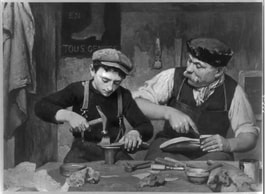 An apprenticeship in some arcane craft. An apprenticeship in some arcane craft. The school I went to when I was between the ages of 14 and 16 wasn’t the sort of school that produced writers. Pupils were expected to “learn a trade”. It was an all-boys school which meant apprenticeships in some arcane craft, motor mechanics, the building trade and so on. I assume that at the girls’ school across the road they were being taught to type, to cook and to raise babies. Our horizons weren’t even stretched as far as working in an office, at least, not without staying on for 6th form, which the families of most of the boys couldn’t afford for them to do. Regardless of academic ability. the vast majority left school at 16 to start earning a living so they could contribute financially at home.  So that’s what I did. However, having been raised on the works of Captain W. E. Johns, author of the “Biggles” books, I decided to learn my trade in the RAF. But I didn’t stop writing. Almost every RAF station I served on had a station magazine and they were always looking for “content”, as we would call it today. I was happy to oblige them, though not everything I wrote was published. Apparently, parodying the domestic lives of the senior officers is frowned upon. Who knew? At the end of my 23 year stint, I suddenly found myself unemployed. I threw my efforts into finding a job, of course, but we were in a recession at the time and job hunting was an uphill struggle. To preserve my sanity in that dark time I decided to have another go at writing a book.  Learn from the best. Learn from the best. Having, to a certain extent, honed my skills in writing for magazines, what I produced was far better. I won’t go as far as to say it was good, as evidenced by the fact that I have never attempted to get the book published. But it was a start. It also served its purpose in keeping my mind occupied. More than that, it was a learning exercise. The most important lesson I learnt was that it is the characters who must take centre stage. A plot without good actors will never work. Instead of reading for pleasure, I started to read to learn how to write. Firstly, I read the books of successful novelists and analysed them to discover why they were so good. It always came down to the characters. The plots could be laughable in the way they were contrived, but having good characters, ones I came to care about, meant that the clunky plot was ignored, and I enjoyed what I was reading because of my emotional engagement with the characters. It was probably the most valuable lesson in writing I have ever learnt.  I eventually got another job and 17 years later switched jobs again. That final job was actually 20 hours of work squeezed into a 35 hour week, so I had a lot of time on my hands. I used the extra time to start writing again. I spent so much time writing that on one of my performance reviews my boss commented on how busy I always was, constantly beavering away. Little did he know! (BTW, I always did my real job first and to the best of my ability and was commended for my achievements). But the writing spark had turned into a forest fire, and I wasn’t dishonest enough to keep allowing my employers to continue paying me to be writer, so I took early retirement and started writing full time. Here I am, 12 years later and with 31 books published (including non-fiction) and I’m still writing like there’s no tomorrow. 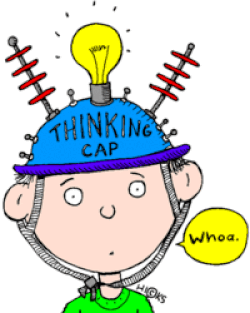 The next question I would like to answer is “where do you get your ideas from?” Well, they are all around us, all the time. Let’s start with world news. Every bulletin has the potential to produce ideas that can be turned into a book. All human life is there, in graphic detail. The politics, the hardship, the heartache, the trauma, the drama and blessedly, sometimes, the humour. Turn on the TV or radio news, pick up a printed newspaper or go onto the internet and there are myriad news stories just waiting to be fictionalised. Real authors can spot those and turn them into a full length novel.  History is a great source of ideas for stories. So many kings, queens, politicians, rogues, heroes, vagabonds, explorers, adventurers etc. Each has their own story and those can be borrowed and turned into fiction. I’m a great fan of this genre myself. Then there is everyday life. Some people call it “people watching”, but the world around us can provide the author with a thousand stories if they have the imagination. A young woman running for a bus, almost losing a shoe, can provide a hundred questions as to how she came to be there and what may become of her. If the author can imagine good answers, they can turn them into a book. Finally, there are our own “lived” experiences. Life rarely runs smoothly for anyone, and the speed bumps and car crashes all provide us with stories we can tell. In reality we do tell them, to friends and family, or maybe to our therapists. All an author does is write the same stories down and pad them out to a length that will make them a book rather than an anecdote. Of course, they have to be amplified to make them more dramatic/romantic/funny but that comes down, once again, to imagination.  What about sci-fi and fantasy? They don’t come from day to day life. Wrong. For the most part, sci-fi and fantasy novels are made up of the same plots as the stories we set on Earth. They just have bits added on to make them appear different. Star Wars, for example, is just the story of good vs evil transported to a galaxy far, far away. All the author does is to use their imagination to create worlds where the stories can be told, as they do with fantasy. “Luke, I am your father” is a trope that can be found in many an Earthbound story, as can the twins separated at birth. Shakespeare’s “Comedy Of Errors” and “Twelfth Night” both use the basic separated twins trope. The final question I want to answer is “Is it difficult to become a writer?”  If writing is ever this boring, you aren't a writer. If writing is ever this boring, you aren't a writer. My answer would be “no”. But there are many caveats to that. Anything you enjoy doing is never a chore. I enjoy writing, so I don’t find it difficult. If someone sits down and starts to write and they have become bored after a couple of thousand words, they will never become a writer. Not because they can’t write well, but because they clearly don’t enjoy writing. The more you study and practice a subject, the easier it gets. That is what I have done as a writer. But I find chess hard. Chess Grandmasters will tell you that playing chess is easy and for them it is. Because they have practiced for thousands of hours playing hundreds of thousands of games to get to where they are. Of course it’s easy for them. I play one game every ten years, so for me it’s always going to be hard. So it is with writing. The more you learn and the more you practice what you have learnt, the easier it gets. If your idea of writing is doing the weekly shopping list, you will struggle if you start to write a book. 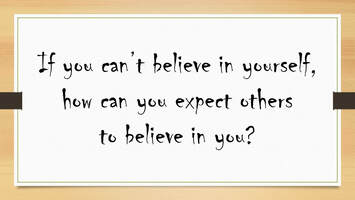 Finally, you have to believe you can write. Like many other creative professions, authors are plagued by insecurities. Imposter Syndrome stalks us like a hungry tiger. It sucks all the enjoyment out of writing which, as previously mentioned, is an essential part of being a writer. Overcoming that barrier of lack of self-belief has curtailed many a potentially successful writing career. So, when the whispers of self-doubt start to be heard in your brain, you have to shout back very loudly “I am a writer!” I shout it out loud, which is very disturbing for my wife. But if I didn’t, I would have given up 31 books ago. So don’t give up. Most authors take years to become an overnight success. Some never will become a success, but that doesn’t spoil their enjoyment of writing. To find out more about my books, see the "Books" page of this website. If you have enjoyed this blog, or found it informative, then make sure you don’t miss future editions. Just click on the button below to sign up for our newsletter. We’ll even send you a free ebook for doing so.
0 Comments
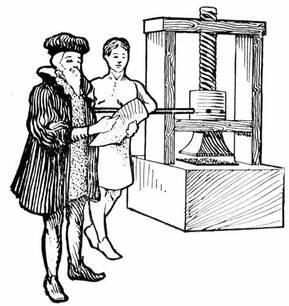 Is the game up for traditional publishers? I’m not talking about today or tomorrow. What I’m talking about may take years to come to fruition, but the publishing world is changing, and the trad publishers don’t seem to have cottoned on to the fact yet. Between themselves and agents, they have made it almost impossible to access mainstream publishing. The gate keepers are no longer just keeping the gate, they are building high walls and digging moats so deep in front of the gate that no one can get in. 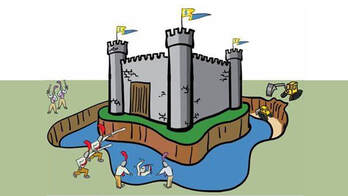 Which is why not only is the publishing model changing shape, it has no choice but to change shape. But the trad publishers are sticking their fingers in their ears and singing “la, la, la”. With so many authors now taking the self-publishing route, it is becoming the norm rather than the exception. According to this article, 300 million self-published books are sold each year. That’s 30-35% of the publishing market. While the global publishing market is expected to grow by 1% per year, the self-publishing market is expected to grow by 17% per year.  Prior to 1998, the only way to self-publish was to pay a printer to print your books, then hawk them around local book shops trying to find one to stock it for you. But in 1998 Chip Wilson, a millionaire entrepreneur, created a self-publishing website called Lulu and that all changed. Now anyone could publish their book on-line and sell it through the platform. Imitators followed and, of course, the retail giant Amazon established their own platform, Kindle Direct Publishing (KDP), which now dominates the self-publishing market. So, from almost nowhere in 1998, self-publishing now holds approximately 34% of the market – and growing. I’m not going to say that the quality of the books is 100% great, but there are plenty of good self-published authors and many make a respectable living from their writing. In fact, some make a better living than authors who are trad published. There are at least 7 self-published authors achieving 7 digit income levels and many more making 6 digit levels. 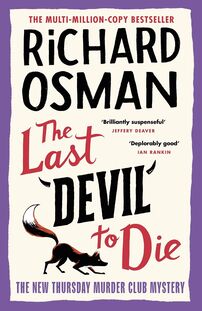 Which is one of the reasons I think there will be further shifts in the industry. A trad published author receives about 10% of the sale price of their book in royalties. From that they then have to pay their agent (actually the agent usually gets the royalty cheque, deducts their commission and then passes the rest to the author). Richard Osman’s latest best-seller is priced at £11.99 for the Kindle edition and £9.99 for the paperback at the time of writing this blog. Don’t ask me why the paperback is cheaper because I don’t know, but it probably started out being more expensive. Based on current publishing practice Richard will receive around £1.19 in royalties for the Kindle edition and around 99p for each paperback sale. If he were to self-publish and sell his book at the same price, he would make either £3.60 or £8.39 per copy, depending on whether he took the 30% or 70% royalty option. If I were Richard, I’d be starting to wonder about the wisdom of sticking with trad publishing.  As a big name author, he would have no problem setting up distribution deals with all the major retailers, without having to rely on his publisher to do that for him. The rest is down to editing, cover design and marketing and he could hire people to do that for him. I think he’d still end up with more money in his pocket than he does now. For a start, he wouldn’t have to give between 10% and 20% of his royalties to an agent. I suspect that a lot of trad published authors will do these sort of sums in future and when their existing publishing deals come to an end, they’ll self-publish the next book they write. 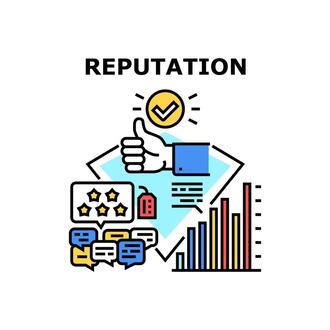 It is noticeable that publishers are now trying to tie authors into multi-book contracts in order to prevent that sort of desertion, though at the moment they are more worried about their authors being poached by other trad publishers than they are about their authors opting to self-publish. The more top quality authors who go down the self-publishing route, the better the reputation self-publishing will gain. I strongly suspect that the much of prejudice against self-published authors is being fuelled by trad publishers trying to protect their businesses.  Change sometimes happen at a glacial speed. But change can also function more like a snowball rolling down a hill, getting bigger and bigger and going faster and faster. I may not be around for long enough to see which metaphor is more accurate, but many of you will be. But I predict that one day, when a new author announces on social media that they are about to start querying their novel, the response from other writers won’t be “Good luck”, it will be “Why on Earth are you bothering with that?" If you have enjoyed this blog, or found it informative, then make sure you don’t miss future editions. Just click on the button below to sign up for our newsletter. We’ll even send you a free ebook for doing so.  Measurement is the poor relation of marketing. While Indie authors may come to realise that they have to market their books, they don’t always realise the essential role that measurement plays in their decision making. Not knowing how to use measurement in marketing is like walking blindfolded through a room barefoot, with the floor covered with Lego bricks. At some point you are going to say “Ouch, that hurt.” Now, you may think that there is only one measurement that is worth looking at, and that is sales. But you would be wrong. To tell you why, I’d like to present you with a hypothetical scenario.  Let’s say that an Indie author has spent £100 on advertising in a month. They split that 50:50 between Amazon Ads and Google Ads. They have made sales and made a profit on their advertising, so they want to re-invest some of that profit into more advertising.
With that 3rd bullet goes supplementary questions – should they keep the split 50:50 or should they spend more on one platform than the other? The only way to make a sensible decision is to analyse the data and see what it is telling them. What the author needs to know is how many clicks each ad got, how much each click cost them and how many clicks were converted to sales.  To give you a real life example, we recently ran a Google Ad for one of our titles. According to the data we got a lot of clicks on the ad, so you might think that it was a success. However, there was no change in sales volume for the book. If the clicks had been converted into sales, there should have been a corresponding rise in sales volume. Only by putting the two sets of data side-by-side could we see that. The next month we ran an Amazon Ad for the same book. We didn’t get nearly as many clicks as we got for the Google Ad, but we did get a rise in sales. Not only did Amazon Ads tell us how many clicks got converted to sales, we could see it in our KDP sales data as well, in terms of increased sales volumes compared to the previous month. So, going back to our hypothetical example and the 4 questions (plus supplementals) we asked, we might well decide to spend all our budget on Amazon Ads and none on Google Ads. The data was telling us that, so we have no reason to doubt our decision making. 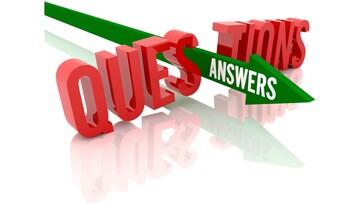 But the story doesn’t end there. If we were getting so many clicks from Google Ads, why weren’t they getting any conversions into sales? Normally we would say that it has something to do with the book’s blurb, the reviews or the free sample. Maybe they weren’t enticing enough. But if that were the case it would apply to the Amazon Ads as well, which we know wasn’t the case. So, we have to look for different answers. When we drilled down into the data, we discovered that the majority of the clicks we were getting were from outside of the UK. The book is on sale everywhere, so that shouldn’t make a difference, but perhaps it was. The book is very UK centric in its story. Perhaps that put other nationalities off buying it. We can’t be certain of that, but it is borne out by our KDP sales data. 98% of our sales for that title are made in the UK and Ireland. Again, we were putting data side by side in order to interpret it.  Above, we mentioned the need to understand how much each click cost us. That is essential information, because if we don’t know that we can’t know if our ad generated a profit. Let’s say we got 100 clicks and made 10 sales (that’s a fairly typical conversion rate for a new author). That sounds good, doesn’t it? According to Amazon Ads those sales would be worth £59.90 gross if the book sells at £5.99. Cause for celebration, perhaps? Actually no. Those 10 sales may have been valued at £59.90 gross, but may only have yielded £30 in royalties. If those 100 clicks cost us £35 (again, a typical cost based on 35p per click) then our ad campaign didn’t make a profit, even though it made sales. It made a loss of £5. And don’t forget that £35 is the pre-tax cost. If you are in the UK you have to add 20% VAT to get the final cost. Maybe we would need to re-think whether or not to spend our advertising budget with Amazon Ads too! Again, we have to put data side by side to interpret it and the data may have to come from different sources, eg both Amazon Ads and KDP.  Now, I’m not saying advertising doesn’t work, because it does. What I am saying is that we have to use all the available data to measure the effectiveness of our advertising. If you are spending £100 (after tax) on advertising and you are making £101 in royalties, then whoopee. You are in profit. But you have to know that and that means measuring what you are doing. So far we have only talked about paid advertising. What about social media?  Indie authors spend a lot of their time on social media promoting their books. It isn’t costing them anything except time, so no need to worry, is there? Actually, as the old saying goes, time is money (Benjamin Franklin). All the time you are on social media promoting your books, you aren’t writing new books which could make you more money. So, time has an associated cost. It is therefore necessary to work out if the time you spend promoting your books through social media is actually time well spent. Social media sites provide data on how many people have interacted with a post. That could mean a “like” or a reply, or it could be a click on a link. The more interactions there are, the more likely it is that they will convert into sales.  So, if your posts aren’t getting interactions, you need to know why, because to continue what you are doing is just going to waste your time. If you always do what you always did, you’ll always get what you always got. This may mean asking other people what they think of your posts, so you can work out what is most likely to get an interaction. Also, you need to “benchmark” against posts that get a lot of interactions to see what it is about them that makes them so attractive. 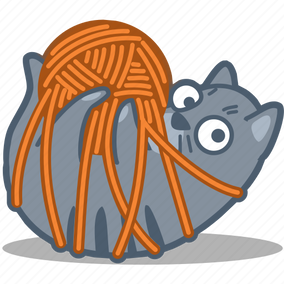 Of course, we mean posts that promote books. Knowing that posting a video of a cute kitten playing with a ball is going to get lots of interactions, isn’t going to help you to sell any books. Lots of authors think that asking questions on social media and getting a gazillion answers is interacting. It isn't. yes, the post gets a lot of responses - but is it selling books? If it isn't selling books it is just wasting time. So, some of the data that has to be compared are interactions compared to books sales. Do they line up. If not, why not? But knowing that a video gets more interactions than a still image might also be useful to know. 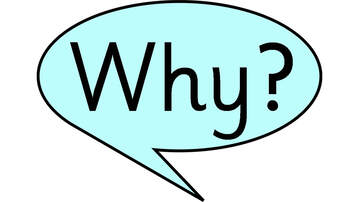 But with measurement you must always ask the question “why”. - Why aren’t my posts getting interactions?. - Why aren’t interactions on social media converting to sales? - Why aren't my video clips getting more interactions? Etc. I can’t answer those questions for you in a blog. I can’t even think up all the questions you might want to ask. But there will be answers. You just have to go looking for them. Social media sites provide all that data for free. All you have to do is use it. Measurement and data analysis isn’t very exciting stuff. But using it wisely can make your book sales very exciting. But, like all of book marketing, you have to invest time into it to get the best out of it. But it could help you avoid those Lego bricks. If you have enjoyed this blog, or found it informative, then make sure you don’t miss future editions. Just click on the button below to sign up for our newsletter. We’ll even send you a free ebook for doing so. Disclaimer: No financial inducement was offered or requested for this review and no payment was received. The reviewer was provided with a free review copy of the book. The views expressed in this review are those of the reviewer and are not necessarily those of Selfishgenie Publishing. 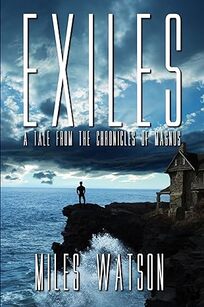 Exiles, by Miles Watson, is a novella, but it could almost stand as a full length novel. The book serves as an introduction to “The Magnus Chronicles”, a series of dystopian novels set in a world that could be Earth in either the past or future. That is not clear from the story. Is it an alternative history or a possible future? I think the reader must decide. There is some modern technology, but it is limited by “The Order”, the body that rules over most of Europe. However, there is also a lot of 19th century technology still in use, though that might be because so much modern technology is banned. This little book actually tells two stories in one. The first is told by Marguerite Bain, the Captain of a smuggling ship. Smuggling is an organised, if dangerous, profession with its own ruling Guild. Marguerite gained her command under the tutelage of a senior Captain who now serves as one of the Guild’s governors. While smuggling is illegal, a blind eye is turned for the most part. Bribery and corruption play a large part in that unofficial tolerance, as it does in most of life under The Order. Marguerite has had a hard life, not one to be envied by any woman. Now, as skipper of her own ship, she has to show that she is ready to kill anyone who challenges her position and the only way she has been able to prove that is to do it. Now an uneasy truce lies between her and her crew, though she knows that if she shows any sign of weakness they would kill her, after taking their pleasure first, of course. The Sea Dragon, her ship, is contracted to deliver supplies to the eponymous exile on his remote and barren island. It is a task she is unable to refuse because it has been brokered by the Guild and such a contract can’t be broken. Her orders are strict. Deliver the supplies and leave the island. Do not make any attempt to communicate with the exile. The previous contractor forgot those rules and now he is no longer alive. But Marguerite is curious and can’t resist finding out about the exile, so she secretes a notebook and pencil in the supplies, asking him to tell his story. Which is the second story in the book. Enitan Champoleon is a name that is notorious as an opponent of The Order, an organiser of the resistance. He is almost mythical, a sort of Scarlet Pimpernel figure. But if the Order captured him they would just kill him, not exile him on a barren rock. So, who has placed Champoleon in this living hell? All becomes clear by the end of the story. But through this dialogue Marguerite starts to feel a bizarre kinship with the exile. The story's point of view switches back and forth between Marguerite and Enitan but at all times it is clear who is narrating. The style of language is fitting for the ambivalent chronological setting of the book. In many ways it is Victorian, but interspersed with more modern phrases and idiom. Either of the two stories are capable of engaging the reader fully, but the two of them together become compelling and the book is a real page turner. For lovers of fantasy or sci-fi it is a very good read. This reviewer is now a convert and will soon be embarking on reading The Magnus Chronicles in full. The ebook can be purchased from Amazon for £3.95 or can be downloaded on KindleUnlimited for free. The paperback version is £4.74 (all prices correct at time of posting). I recommend “Exiles” by Miles Watson and to find out more, click here If you have enjoyed this blog, or found it informative, then make sure you don’t miss future editions. Just click on the button below to sign up for our newsletter. We’ll even send you a free ebook for doing so.  Up until now we haven’t posted much about using YouTube, Instagram and TikTok for book marketing. It isn’t because they aren’t any good for marketing. In fact, just the opposite. Those platforms are as good, if not better, than Facebook or X for selling your books. No, the reason we haven’t posted about them before is that you have to think about how you use them in a different way from other social media. Because of that we’ve been trying out different approaches of our own to see what works – and what doesn’t. Just posting an image of your book cover isn’t going to sell your book on those 3 channels. Not even making a book trailer featuring your book is going to work.  The reason why is that those 3 marketing channels work on the basis of personal interaction. What do we mean by that? After all, it is someone talking on a video. How can anyone interact with that? Well, they interact on a psychological level. The viewer sees the person in the video talking directly to them and to no one else. The video speaks to them personally. Now, there are a number of techniques that the people in the videos use and they vary according to what is being sold. I’ll illustrate what I mean with some examples.  Let’s start with the “influencers”. These people make a lot of money because they sell products on behalf of brands. But they never use the word “sell”, or “buy” or make any other reference to commercial transactions. I’ll use a stereotypical influencer to illustrate: the make-up demonstrator. They open with a line such as “I want to show you this great new lipstick (or whatever) I’ve just discovered.” Of course, their tone of voice is excited. This lipstick is so great they can’t contain their excitement about it. Which gets the viewer excited because excitement is contagious. Straight away the viewer is interested because the influencer is letting them in on their new discovery, not trying to sell them the lipstick (even though they are). They are sharing a secret with them. Those are very intimate acts, and we respond to them at an emotional level. They then demonstrate their use of the lipstick, which makes them look fabulous of course, and the viewers want to look just like the influencer, so they buy the product. The influencer may not even mention where the viewer can buy the product. They’ll show them the brand name, of course, but then they’ll leave it up to the viewer to follow-up because that way they won’t feel pressured into buying. The technique isn’t new. Product demonstrators have been around almost as long as products, but in the past they were standing in front of you rather than appearing in videos on-line.  Next we have the musicians. Their technique is different. They’ll start by saying something like “This is my latest song which I want to share with you.” Again, you are being drawn into an inner circle of intimacy. They then sing a verse and a chorus. If you like the song, you then have to either buy it to hear the rest or add it to a playlist. Either way, the musician sells their music without actually selling it. 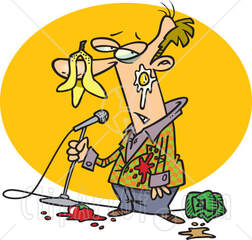 Then we have the comedians. They post video clips of their act. They make you laugh, so when they announce their next gig or their next tour, you want to go along and see them, so you buy tickets. That is more of a delayed reaction, but it means more ticket sales than if they hadn’t posted the clip. So, three different techniques for three different types of product. There are other types, but those serve my purpose in illustrating how the channels are used in different ways.  Now, how do you adapt this to suit your product – a book? With YouTube you can adopt the same technique as a musician and read an extract from your book. You don’t have to show your face if you don’t want to but setting the scene is important; use the camera to act as the viewers' eyes, perhaps finding the book on the arm of a comfy chair and settling down to read it. The voiceover then reads the extract, which you can do yourself It will probably take you a few goes to get the sort of image you want, but it will work. Put an “end board” on the video saying where it can be bought and provide a link in the video’s description along with the blurb and some suitable hashtags. If you use Canva or BookBrush (or similar packages) you can make videos of someone reading an extract. For example, if your book is set at sea you can uses a video of a seascape with you reading the extract as the soundtrack. Then promote the heck out of the video on your other social media.  Instagram and TikTok aren’t so well suited for readings. Their users have short attention spans. Anything longer than a minute probably isn’t going to be watched to the end. And anything that isn’t eye catching isn’t going to be watched at all. The first 5 seconds of the video is crucial to grabbing the viewer’s attention. This is where you have to project your personality as an author. If you try to pitch your book, you won’t sell anything. You have to pitch the idea of books in general and then mention your own books in passing. A popular style in recent months has been “Five books I wish I could discover all over again”. You don’t have to show your face, you just have to show the book covers and maybe your hands flicking through the pages. And, of course, you have to talk about why the books mean so much to you. Then you segue into how those books inspired you to write your own book, a copy of which you also happen to have in camera shot. You can talk about your own books, but you have to put a new twist on it.  People love stories. People love stories. People, especially those that read books, love stories, so use that to your advantage. One of our authors laid out his books on a table then said that not only did the books tell a story, they each had a story of their own, which was how they came to be written. He then made a separate video for each one and told the story of how he had been inspired to write it, into which he wound some of the book’s plot and characters. And it worked. Each video sold copies of the book he was talking about. But he never actually talked about the book in the way he would have in a written blurb. I would recommend going onto TikTok and Instagram and using the hashtags #Booktok and #bookstagram to see what other authors are doing on there. If your favourite authors have TikTok or Instagram accounts, see what sorts of content they post to promote their work. Remember, imitation is the sincerest form of flattery. Identify the sorts of videos that make you feel good about the author and their products, not the ones that are trying to pitch books directly to you. Emulate the former, not the latter.  Unlike X or Facebook, these channels aren’t about how many followers you have. Your videos will be shown to users based on what they like to see, so it doesn’t matter if they follow you or not. If they are using any of the hashtags that relate to books or reading, there’s a good chance your video will be shown to them if you have used related hashtags, including genre hashtags Of course, if they follow you that’s a bonus, because it means they will definitely see your videos in the future. But that isn’t as important as it would be on X or Facebook. Once again we must add a “health warning” that using YouTube, Instagram and TikTok isn’t going to turn you into a best selling author overnight. But they can add additional strings to your marketing bow. Experiment and have fun. You have nothing to lose except for a bit of time.  Just a few tips for you. Make sure that any book titles haven’t become reversed during the recording process. I recently watched some TikTok videos by an author I follow and in a couple of them her book titles appeared as “mirror images”. This is a common problem when using the camera in “selfie” mode and holding the book up in front of your face (try it if you don’t believe me). If you have friends who read your books, ask them to do video reviews for you on TikTok or Instagram, making sure they use suitable hashtags, including your author name. Vary your styles and themes. If all the videos you post look the same or sound the same, people will lose interest. 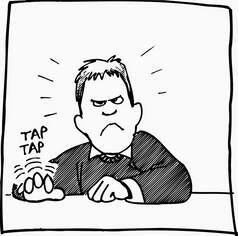 Be patient (yes, that old one again). If you are just starting out on these channels it will take time for people to find you and to share your videos. But they will if you give them long enough. Post as frequently as possible. Yes, it’s a big time commitment to keep on making new videos, but anything worth doing is worth investing the time into doing it. Use "dead time" to make videos, eg when commuting, coffee breaks, lunchtime etc. For those of you who have never used these platforms, here are some links to helpful videos on how to use TikTok. Most of what they say can be applied to YouTube and Instagram too. TikTok Beginner’s Guide https://www.youtube.com/watch?v=rjjjlJw2cgM How to make TikTok Videos https://www.youtube.com/watch?v=vAho-cr5UxY 10 Mistake TikTok users make https://www.youtube.com/watch?v=nrY9HpJd6zE Hashtags https://www.youtube.com/watch?v=xcZHGr_xpII If you have enjoyed this blog, or found it informative, then make sure you don’t miss future editions. Just click on the button below to sign up for our newsletter. We’ll even send you a free ebook for doing so. Selfishgenie Publishing are pleased to hand over our blog this week to one of our poets, AngieD, who is writing about how she became a poet and how she is inspired to write her poetry. Disclaimer: All views expressed in this blog are those of the author and aren't necessarily those of Selfishgenie Publishing  Poet AngieD Poet AngieD I’d like to say that writing poetry was something I was good at in school, though in between Romeo and Juliet, Hard Times et al, there didn’t appear to be much time devoted to this category of English Literature; what little poetry we children were exposed to I could barely understand since, to my mind, it was in adult language and highly cryptic; too cryptic for my little ears. I therefore had very little knowledge of what poetry was about, except for limericks and nursery rhymes. And so, if I said it was something I’ve always wanted to do and that each time I read a ditty it had me thinking “Gosh! I wish I could write a verse” and piqued any great interest, I would be lying! It wasn’t something that ignited any spark of excitement or great interest at all, quite different from hearing someone with extraordinary musical abilities, which aroused feelings more of jealousy that I couldn’t, and probably would never, play like that.  I didn't get excited about poetry. I didn't get excited about poetry. So, besides reading limericks and silly nursery rhymes, I didn’t really give poetry much thought. In fact, the first I really knew about any ability to write a verse was quite a few years ago, lying in bed one weekend morning in my very small and humble-in-great-need-of-decoration second floor London flat and being disturbed by the neighbours occupying the one below. They were making an awful racket but, instead of getting highly irritated (well, not strictly true – I was a little irritated at first!) my mind just seemed to speak in rhyme. It was quite a startling and frightening revelation to me.  Gracula religiosa intermedia (Common Hill Myna) Gracula religiosa intermedia (Common Hill Myna) At first I heard myself say “who’s that talking?” not realising it was my mind. Nevertheless, I went with the flow, chuckling as I wrote down the words of this verse about a Myna bird. I had never had an encounter with one; I’d never even seen one. I even had to look it up. What connection had this with the noise I was hearing? I have no clue, but my first ever verse was written and, being a PA Secretary (and previously in the “be prepared” Girl Guides and Girls’ Brigade), I always had pen and paper by my bedside. And that was the start!  From then on it was, as they say, all systems go, like a dam had burst and that part of my mind which had laid dormant had suddenly woken up, its contents released, and there was now no turning back. Things I’d never noticed before would quickly come into my mind’s eye and words or lines would pop up. Voices would say “hurry up there’s another waiting to be written down”. It could be frantic at times since I couldn’t write quickly enough to get everything down! Now, was this the reason I learned shorthand?* Even if it wasn’t, it was now coming to the fore, since it enabled me to write at breakneck speed. This doesn’t bode well for wrists and hands since even before I arrived to start a day’s work, I was already weary from an hour or more of writing while on my train journey.  The lightbulb of inspiration. The lightbulb of inspiration. I found nothing in particular inspired me. In fact, everything inspired me. Finding a window seat on the train was my most important early morning mission so I could write while observing the scenery and how it changed from morning to morning. It was beautiful. How had I never noticed this before? So much to see and appreciate; now that was exciting! Scenery, people and animals were looked at in a different light. Do you ever notice the habits of people: feet on seats where others have to sit. Leaving their rubbish on seats and floor. Grownups picking their noses, biting their nails, coughing or sneezing without covering their mouths, speaking so loudly one can hear every word (and me itching to join in!). That annoying clicking on laptops or ‘phones as they type away as if the train is their office! My mind would just rhyme away; I could have sat on the train all day just writing.  Inspiration can come from anywhere. Inspiration can come from anywhere. I’m finding writing poetry is a 24/7 thing. Everything I look at, see, or hear becomes a subject. Although I have written now for quite a few years, I have only recently succumbed and accepted the fact that writing is a part of me. It happens anywhere at any time, in any place (church, supermarkets, the aforementioned trains), I’m not really conscious of it happening, it just happens; commuting on my way to work when I had to commute; walking from the railway station to the office; in a restaurant (and often I would be asked if I was a reporter!). Whatever popped up in my mind would have to be written down. I find writing takes no prisoners if it’s in your mind it has to exit somewhere and if one doesn’t comply pretty sharpish, it fades away and is forgotten. Work produced ample opportunities to write fun little personal verses. If a colleague was having a bad day, I could write something to make them smile. Business acquaintances too would engage and respond to my verse, in verse. Which made work all the more fun and, sometimes, they would even apologise for not replying in the same vein!  Everything seemed now to be about writing verses, not just writing a memo in prose, but some notification of meetings or cancellations were rhyme written and, again, replies would come back in verse! See, everyone can rhyme! Earlier years would see me go to bed with a pencil and notebook and practically never sleep! I am learning to control it a little more than in past years. I won’t say I’m completely successful, that would be impossible. If that which is filling my mind is not written down then it is lost forever. This has been tested; I’ve had a verse(s) in my mind and thought that chanting it over and over during the night would ensure it would be remembered in the morning. Not so, I couldn’t even remember the subject, so that much I’ve learned. Even though I now leave the pencil and paper on a cabinet three steps away from the bed, verses still often, come in the middle of night and I have to write them down but, thankfully, it’s much easier doing it via the recording app on my phone! 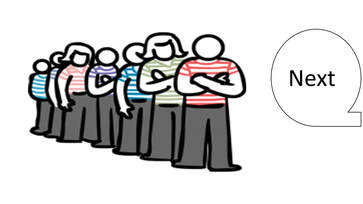 The queue of ideas is never ending The queue of ideas is never ending At times it feels like a tap that never switches off. Each new day brings a different set of subjects and so the writing continues, and you tend to become at one with whatever you’re writing about. It never occurred to me that I would be writing for so many years. Did I ever think I’d write so many? No. I thought one day I’d run out of things to write about, maybe about the 50th verse and that one day the verses will dry up. Touch wood, thousands of verses later it hasn’t happened yet. I am aware of the saying all good things come to an end, but my end has not yet come! Do I get tired of writing? Well actually, physically, yes I do. It’s a never-ending task to which most poets and authors of books can probably attest. There is always an idea in your head and before you can write it down another one is waiting in the wings eager to be noted. The unavoidable task of writing is logging all that is written!  The one about the loo rolls! The one about the loo rolls! I write to empty my mind of words to make room for the words I can see pushing past those I’m writing, so I think so there’s no time to enjoy. I do often sit while watching TV reading some of the verses and often wonder what the blazes was I thinking to write that (like the one about loo rolls!). But what I enjoy most and the best reason to write is seeing those who hear my readings, and knowing those who read my book smile and/or comment that they can relate to whatever they’ve heard, whether it’s romance or why toenails grow much faster than fingernails. I’ve said it before and I’ll say it again, if it makes people smile or gives food for thought then it’s been worth writing! 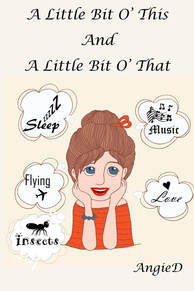 Poetry seems to be within me for the foreseeable future, so I have (happily) learned to live with it and the constant buying and sharpening of pencils!. Poetry is my world along with music, spinach, dancing and cheese. To find out more about AngieD’s poetry, see her collections on our “Books” page. Two more volumes are scheduled for publication during Spring 2024. * For younger readers, shorthand was a system of speed writing. The modern versions can be traced to 1720, but it is known to have existed as far back as the 4th century BC. It is a way of writing that allowed secretaries, journalists etc to record the spoken word at the same pace as it was uttered, without missing any of it. Modern technology has rendered it obsolete. To find out more about AngieD’s poetry collections, click here. If you have enjoyed this blog, or found it informative, then make sure you don’t miss future editions. Just click on the button below to sign up for our newsletter. We’ll even send you a free ebook for doing so.
 I read a post in a writers’ group on Facebook recently that said that the author had done their “research” and come to the conclusion that there were just two approaches to marketing a book. Approach One was to plug your book relentlessly on social media. Approach Two was to make sure you get your keywords right, a good cover, a snappy title and a top notch blurb so that your book would show up in searches and sell that way. The person who made the post had decided he was going to put all his eggs in one basket and just pursue one of those approaches. I’ll not say which in case it influences you to do the same, which is not the objective of this blog. In fact, the objective is exactly the opposite.  Like this shape, Marketing is multifaceted. Like this shape, Marketing is multifaceted. I’m not going to say that either of those two approaches are wrong in themselves. What I will say is that narrowing things down to just one of two approaches is like saying there are only 2 ways to cook eggs (I can think of 6 without breaking sweat). Marketing, like any discipline, is multi-faceted. Tossing a coin and saying that only one option will be taken is like taking a binary view of any activity. It rules out more than it includes and what it rules out is valuable. Good marketing is analogue decision making, not binary. Using social media to plug a book is important to an Indie author. First of all, it is all some authors can afford because everyone can afford free. Secondly it raises the author’s profile, even if it is only amongst a limited size group of people. Finally, it can actually sell books if done the right way. But having the right keywords, cover, blurb etc is also essential. Keywords get the book found in searches. But they don’t sell the book. Once the book has been found, the cover attracts attention, the blurb increases the reader’s curiosity, and the sale is around 70% made.  But it is either the reviews or the free sample (sometimes both) that actually sells the book. Reviews because people will buy what other people have liked and the free sample because it allows the reader to decide if the book lives up to the expectations raised by the blurb and the cover. But that assumes that the book appears high enough up in the search results. There can be no doubt that Amazon ranks search results by popularity. At the top of Page 1 of the results is always the “sponsored” books, the ones that authors or publishers have paid to be there. Then you usually get the best-sellers in the genre because Amazon knows that they are money makers. The rest of the results can be spread over many pages and there is no way of knowing how far readers will go through the results before they buy their next read. Yes, your book will be there if you used the right keywords, but they may be on page 100. 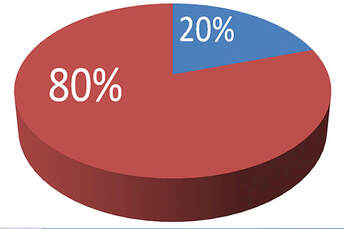 I suspect it’s going to be one of those 80:20 things. 80% of all books that will be purchased will appear on the first 2 or 3 pages of results and only the remaining 20% of sales will be made on subsequent pages of results, with the percentage declining the further you go through the pages. I have no evidence to support that, BTW, but intuitively it would seem to make sense. So, if you want to be in that 80% you have to do something else to make that happen. And that falls outside the second approach described above. To get your book into the 80% you have to find some way of marketing the book that doesn’t depend just on search results. You have to find a way of getting the reader to go looking for that book specifically, rather than doing a search. And that means finding a way of getting the reader to click on a link so that they go to exactly the right page for the book.  So, we’re back to social media. Yes and no. Social media is just one route that can be taken. We’ve already mentioned paid advertising as a way for readers to find a book the reader didn’t even know they wanted to buy. We use it and it pays for itself many times over. But for people who have a more limited budget that isn’t always a viable route to take (but check it out because it’s probably cheaper than you think). When you use social media and search results together, you start to harness the best of both worlds. It isn’t an either/or situation. It is a “both in the right place” situation. Then you can add in things such as email lists, promos, blogs and so much more.  I could list all the approaches that we at Selfishgenie Publishing use, but you would end up reading all day and you probably aren’t up for that. Scroll down to read the blog we posted a fortnight ago, because that says a bit more about what successful book marketing involves. Suffice to say – there is more than one way to skin a cat and using several ways, at the right time and in the right way, is always going to produce better results than just limiting yourself to one approach (apologies to animal lovers, but it’s just a saying. No animals were harmed in the writing of this blog). That is why marketing is such a time consuming activity for the Indie author and if you aren’t prepared to commit the time, you are always going to get disappointing levels of sales. One of the most frequent questions Indie authors ask about marketing their books is “Which is the best place to market my book?” The answer to that is so subjective that there simply is no answer. 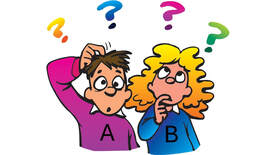 Just because Author A had huge success using Platform X, it doesn’t mean that Author B will have the same success if they also use it. This is why you have to know your readers, especially when it comes to using social media. For example, TikTok is used a lot by younger people. Now, don’t get the idea that it is only used by them, because older people use to too. But if you want to reach younger readers, then you are better off using TikTok than using, say, Facebook. Many women find X (formerly Twitter) too hostile for them, so if you want to reach a female audience you would be better off using Instagram or perhaps Pinterest, where more women tend to hang out. And that is why Author A may be having more success and why Author B won’t because their readership is different and therefore their readers’ social media habits are different.  There are even some readers who don’t use social media at all, or the internet for that matter (I know, weird, huh?) so reaching that group of people is going to be really hard, which is where book fairs and other real world forums fit into the equation. I’m not saying you have to be everywhere, all the time. You would have to be superhuman to do that. But you do have to think in terms of being in more than one place at any time. This is why real research is so important. You have to know where the majority of your target readership hangs out and when they hang out there, so that you can be in the same place at the same time. For example, there is little point in targeting YA audiences between 9 in the morning and 4 in the afternoon, because they will be in school or college. You have to target them in the evening. So, what would we like you to take away from this blog? 1. Book marketing is not a binary choice. It is multifaceted. 2. Taking multiple approaches to marketing covers more bases, which means it is likely that you will sell more books. 3. Know where (and when) to find your readers, so your readers can find you. If you have enjoyed this blog, or found it informative, then make sure you don’t miss future editions. Just click on the button below to sign up for our newsletter. We’ll even send you a free ebook for doing so.  It is a sad fact that around 80% of people who start to write a book, never finish writing it. Why such a high dropout rate? It’s not easy to say as those that don’t finish don’t tend to talk about why they didn’t finish, but we can make a few assumptions which may not be too far off the mark. First there is the time factor. Writing a book is a very time consuming activity and when someone has competing priorities, such as work or family, something has to give and the thing that is easiest to abandon is writing. 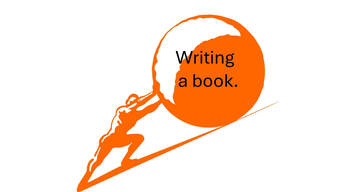 Secondly, some people don’t actually realise that writing a book is quite difficult. They assume that the words will simply flow from their brains to their keyboard of their own volition and in no time at all there will be a 90k manuscript that is all ready to go to the publishers. That is down to a lack of research, of course. Anyone who spends even the smallest amount of time on social media groups dedicated to writing would soon see the posts from frustrated writers and would realise that writing isn’t anything like as easy as it seems. Then comes the realisation that writing the book is only a fraction of the work that is involved in producing a book. Once it is written it has to be edited, market tested (beta readers), edited again, proofread and then the biggest mountain is still ahead: either finding an agent or going self-published. That is enough to put the less motivated off the idea of finishing their book.  Which brings us to the biggest barrier of all for finishing the writing of a book: a lack of basic motivation. It is very easy to come up with an idea for a book. We can be inspired in all sorts of ways, including the “I’m pretty sure I could write a better book than this myself” we have all probably felt after reading a mediocre book. But the world is full of half-finished projects for which the explanation is that the person who started the project didn’t have enough motivation to finish it. Real writers are highly motivated. There can be no doubt about that. There are many reasons they are motivated, and we can take a look at some of them.  The most obvious is that they have a story to tell and writing it down is the best way of telling it, other than pinning someone in a corner and telling it to their face while they try to escape. I’m one of those sorts of writers. Once I have an idea for a story there is no way I can rest until it is written. Sometimes I’m halfway through writing one story when a second comes along and demands attention. It can be a real problem finishing the first story while the second one jumps around in my head trying to get my attention. I think that many real authors suffer from that problem, which is why they produce so many books at frequent intervals. They just can’t stop the stories from flooding out.  The second motivation is that people do it for money. If you are just starting out on your journey as an author, and the possibility of making a lot of money is what is motivating you, then brace yourself, because I have some bad news for you. 70% of all the books ever written never sell more than 100 copies. How motivated do you feel now? There are many reasons why they never sell more copies, and a lack of marketing is one of them, but it shows you what a tough industry you have chosen to enter. Of the remaining 30%, 70% of those will never sell more than 1,000 copies. To put that into context, you have to sell around 30,000 copies to make the equivalent of the “living wage” in the UK, which is about £20k p.a. at time of writing (about $25k or €23k).  Only the smallest percentage of authors will ever make more than the living wage from writing books and the mega rich authors are the ones that get their books turned into movies or TV series. Yes – that could be you. But before you give up your day job, ask yourself what the probability is. The vast majority of authors are the equivalent to the Sunday-morning-in-the-park footballers comparing themselves to Lionel Messi (or Joe Burrow if you are American). 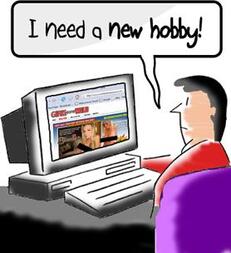 For many authors writing starts out as a hobby; something they like to do to pass the time. The thought of actually publishing a book often doesn’t cross their mind. It is something suggested by someone who has read their “scribblings” as they self-effacingly describe them. Those people tend to be some of the ones in the 70% who never sell more than 100 copies, because they don’t understand that the writing is the easy part. It is the marketing that sells books and that is the difficult part. Thos sorts of people would much rather just keep on with the writing part, so their books never sell. Which is a great pity because they might be potential best-sellers, but no one will ever know.  For some people writing is cathartic. Writing allows people to express their emotions, especially negative ones. Getting things down on the page is a form of release. It can also provide insights into why people feel the way they do, so it is good for their mental health. I have met many authors who have told me that this is why they write. Many of those sorts of books become best sellers, because the emotions expressed are so authentic. 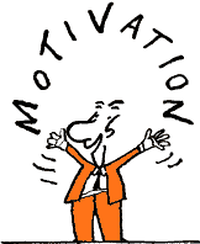 I have described just 4 examples of motivation for writing in this blog, one of which is actually built on a false premise. There are many more I am sure. Why not tell us what motivates you to write? Use the comments section below to share your story. So, if you are just starting out on your writing journey, ask yourself how you are going to keep yourself motivated for weeks, maybe months, on end while you work on your book. Then ask yourself how you are going to keep yourself motivated during the seemingly endless querying process. And, if the querying process doesn’t pay off and you end up self-publishing, ask yourself how you are going to keep yourself motivated while you market your book yourself.  I’d love to be able to answer those questions for you, but in the writing world there is no boss or team to help you stay motivated. There is only you, the device you are writing on and, if you are lucky, a loved one who will keep you supplied with cups of tea and comforting words. But you aren’t really alone. There are thousands, possibly hundreds of thousands, of people in the world just like you. Join a writers’ group either in the real world or the virtual world, because they, too, can provide you with encouraging words. But it will still be down to you to do the rest and there is no one to motivate you to do it except you. If you happen to have some good motivational tips, please feel free to share them in the comments below. If you have enjoyed this blog, or found it informative, then make sure you don’t miss future editions. Just click on the button below to sign up for our newsletter. We’ll even send you a free ebook for doing so.  Books don’t sell themselves. They have to be marketed and learning how to market a book effectively can be time consuming. It can also be expensive, especially as there are so many sharks out there who would like to take your money but not give you very much in return. But you can kick start your marketing efforts by following our top 10 marketing tips for self-published authors. 1. Make time for marketing The one thing every successful indie author can tell you is that marketing takes up a lot of time. But the same authors will also tell you that if you don’t put enough time into marketing, you will never sell any books. Or at least, you won’t sell many.  If your dream is to become a best-selling author, you also have to become a good book marketer. But marketing doesn’t stop when your book has started selling. If you stop marketing, the sales will stop too. This is pretty much a lifetime commitment. You need to spend a minimum of an hour a day marketing your books. That can be more than doubled in the early days or when you have a new book coming out. Yes, it’s a lot. There is no tip in this list that makes marketing any less time consuming. No indie author, even ones who are good at marketing, became an “overnight success”, so you also have to learn to be patient.  Patience isn’t just a virtue – it is an essential. That isn’t something people want to hear in today’s “instant gratification” world. But if you try marketing for a week, get no results and stop because you think it isn’t working – well it won’t work. It wasn’t the marketing that failed, it was the lack of patience that caused the failure. It is said in the marketing industry that buyers have to have 7 “touches” of a product before they buy it. A touch is any sort of exposure to the product and includes seeing marketing messages on-line It takes time for those 7 “touches” to happen. You could be lucky and get them within a few days, or it could take weeks, months or even years. But the more marketing you do, the more “touches” the readers will get and the quicker it will be for you to make sales.  2. Use multiple approaches to marketing. Using one approach to marketing may bring you some results, but using several different approaches will produce even better results (which is why marketing is so time consuming). People respond to marketing in different ways. Some will respond to direct advertising, but others would rather die than click on an ad. Which is why you need to use multiple approaches to reach different people. By using all the different approaches listed below, in combination and at different times, you will tap into several of the different ways that people respond to marketing. We promoted this blog as the “top 10 tips”, but that doesn’t mean that there are only 10, so be prepared to research some of the ones we haven’t mentioned. Our past blogs are full of other approaches, and they can be found in our blog archive. 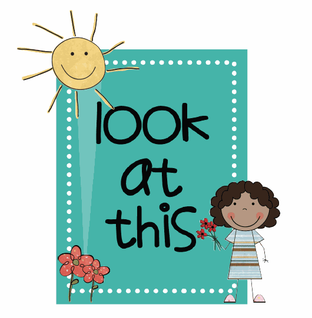 3. Cover The book cover is the first thing the reader sees and it does quite a lot of heavy lifting when it comes to marketing. It has to attract the reader’s attention at the same time as it tells them about the genre of the book. Spend some time looking at other authors’ book covers, especially the best sellers in your genre. What have they got in common? But most of all a book cover has to look professional – even if it was created by an amateur. If you can design your own covers using Canva or BookBrush (other graphics packages are available) and make them look professional, then that ‘s great. But if you can’t it is worth spending a little bit of money to get the right cover for your book. But beware. There are lots of “designers” out there and they don’t all do a good job. Also, the book covers they show on their profiles may not actually be their work. Seek recommendations from other authors, because they have trodden this path before and may be able to point you in the right direction. 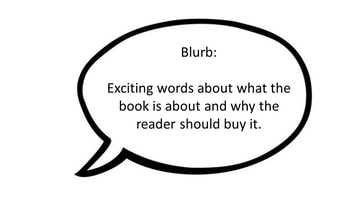 4. Blurb This is the other bit of marketing that does a lot of heavy lifting. So many books don’t sell because their blurbs are just snores-ville. Don’t try to describe your book in your blurb. You’ll never do it justice. Instead describe how exciting/entertaining/dramatic/thrilling/romantic/funny your book is. The first sentence has to hook the reader. It doesn’t matter how good sentences 2, 3 and 4 are. If the reader isn’t hooked by the time they get to the first full stop, those other sentences won’t even be read. We have covered blurb writing in previous blogs and there are lots of other blogs out there on the subject. READ THEM. 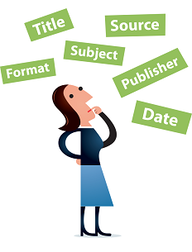 5. Metadata Meta data is all the stuff that you enter on the first page of whatever publishing platform you use for your book. Author name, title, subtitle, description, category (or categories), keywords etc. All this information is important because it is the way your book will be found when readers do searches for books to buy. Your metadata has to include words that will match up with their search terms. Pay particular attention to the category in which you place your book, because if you put your book in the wrong one, you may as well hide it at the back of a cupboard because it will never be found by the readers who read books like yours. On social media we see a lot of authors saying “you can’t fit my book into any category, it’s a cross between X, Y, Z and something new and original I created.”  This is wrong. Their book has a central theme, and that central theme is the category it belongs in. If ever there was a time to “pick a team”, this is it. One “team” will always be better for your book than the others and you have to work out which it is. Do some research! Do searches on etailing sites to find the categories that other authors in your genre are using. You will find the information in the “product description” section on Amazon. Who are the big-name authors in your genre? Take a look at the categories where their books are listed because that is probably where yours should be listed too. If you get your metadata wrong your book won’t show up in search results. If you get it right it will. Maybe not on the first page, or the second page or even the third but it will be in the results somewhere. The better the match between the search terms and the metadata, the higher it will be. When it comes to keywords, do more research. Don’t just try to guess them, try them out to see what sort of search results you get. Use incognito browsing so you don’t get offered your own books or books like the ones you have bought in the past. If you don’t get books like the one you’ve written, then the keywords aren’t the right ones to use for your book.  6. Social media presence The important thing about social media is that it is social! In years gone by, being on social media was a great place to promote your books for free. However, so many authors are now using it for that purpose that readers now tend to just scroll past book promotions. That doesn’t mean you don’t have to bother with social media. But it does mean that you should use it more to build relationships than you do for promotion. And we do mean real relationships, ones that involve conversations. Asking random questions in order to get lots of responses is not a relationship and it isn’t a conversation. Finally, don’t focus on attracting writers, focus on attracting readers. Yes, writers will support you and give you “likes”, but they aren’t the people you need to be talking to if you want to sell books. Readers, on the other hand, are always looking for new books to read. (yes, we know that writers also read books, but there are many more readers than there are writers). How do you identify readers? By starting conversations with people. We recommend Facebook, X and Pinterest. We don’t recommend Instagram, TikTok or similar. But we may be wrong so if you think you can make them work for you, then give them a whirl.  7. Advertise It pays to advertise, that’s why big corporations spend so much money on it. And it can pay back for indie authors too if they do it the right way. The wrong way is to pay on-line book promotion sites to blast out X or Facebook posts and to “feature” your books on their websites. The posts are ignored and the website entries get lost in the crowd. Use the outlets that have been proven to work for other authors. For us this is Amazon and Pinterest. Both platforms are used by people who want to buy something, so the battle is half won before you start. All you have to do after that is to learn to use them effectively. We have sold books using Facebook advertising, but Amazon Ads and Pinterest have both been more successful for us. I have provided some links to resources at the end of this blog. For Amazon, once you have seen their videos, I would recommend undertaking Bryan Cohen’s “5 Day Author Ads Challenge” where he teaches authors how to use Amazon’s algorithms to get better results for less money.  8. Your own website Having your own website isn’t for everyone and if you don’t think it is going to be your thing, that’s fine. However, if you do decide to get a website, or you have one already, it is useless if you can’t get people to go to it to look at your books. You need what are called “reader magnets”. There are two things you can put on your website to attract readers. One is complete short stories that can be downloaded for free. The second is free extracts of your books, with links embedded to take the reader to the complete book so they can buy it when they have finished the extract – assuming they liked the extract, of course. Blogs can be a reader magnet – if you are reading this it is because we drew you in with our magnet – but they take a lot of time to write, especially as you need to post new blogs regularly. If you are considering getting your own website, wait until you have at least 3 books published. The cost can’t be justified if you only have one book to sell. But remember, your website is like your book. Nobody is going to trip over it by accident. Use the other marketing tips in this blog to get people to visit your website or you may as well not bother having it. If you don’t want a website, at least have a Facebook page dedicated to you as an author. Keep it separate from your personal page and use it like you would a website.  9. Price Promotions Price promotions are a great way to kick start sales of a new book, by reducing the price of a previous book. Putting your book on sale for a low price can attract sales, boost you up the sales rankings and get you reviews. However, they won't earn you much in the way of royalties, so you have to strike the right balance. Where price promotions really work is by reducing the price of an existing book and using it to promote the new book. Make sure that you include an extract of the new book in the reduced price book to entice people to buy it. This may mean having to change your ebook’s MS and re-publishing, but that doesn’t take too long. This tactic works very well if you put the new book on “pre-order”, which allows you to generate interest before the actual release date. Your pre-order sales all show up in the sales rankings on the day the new book launches, and they catapult you upwards. We do give away free books from time to time, but we don’t recommend it as a major marketing tool. Free books tend to be downloaded by people who only want a free book. They often don’t result in subsequent sales. Free books don’t feature in sales rankings, so they have no impact in those terms, though they may provide you with a few more reviews. It is better to discount the price of the book for a period. Amazon allows you to do this for 5 days at a time if your book is enrolled in KDP Select, but even if it isn’t, you can reduce the price on the book’s set-up pages on KDP as long as you don’t go below the minimum price that Amazon sets. Draft to Digital allows you to generate Smashwords coupons for discounts up to 100% and you can publicise these through your social media. But special offers are only special if they are for a limited time. Keeping books listed at a discounted price for a long period reduces the impact they have.  10. Learn how to market effectively. We should probably have made this the No 1 tip, but if we’d done that you wouldn’t have read the rest of the blog. There is no substitute for learning the skills necessary to do any job. Exactly the same applies to learning how to market your books. The biggest selling indie authors aren’t the ones who have published the best books. They are the authors who have learnt how to become good at marketing. You can write a mediocre book (we've read some of them) and still become a best-selling author by learning how to market. You can also write the best book ever written and it will never sell because you didn’t learn to do your own marketing. Your book, your rules. All we can say is that we sell books because we market relentlessly, and we are always trying to learn new marketing skills. We have included a link below to direct you to a website where you can get some training for free to get you started. 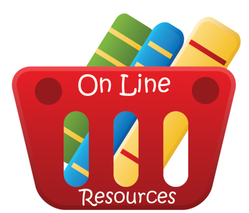 Resources One blog won’t make you a marketing expert, so here we list some resources you can tap into to help you with your marketing. Marketing training. FutureLearn offers free training wherever you are in the world. Search their site for a wide range of marketing courses. You can complete one in a day if you put your mind to it. Using Pinterest for marketing: Beginners use this link, more advanced users should use this link to find out how to use it for business (and selling your book is a business) Amazon advertising: watch their videos to learn how to use their ads platform. To learn to use Amazon Ads more cheaply and effectively, try Bryan Cohen’s 5 Day Author Ads Challenge. This is the Facebook page to find out when the next challenge starts. They usually run once every 3 to 4 months. 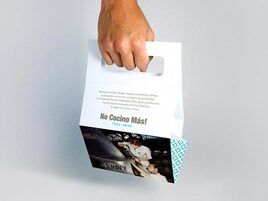 What to take away from this blog There are two key messages that we hope you will take away from this blog: 1. Marketing is the only way an indie author can ever sell more than a handful of copies of their books. 2. Learning how to market is the only way to make marketing work for you. If you have enjoyed this blog, or found it informative, then make sure you don’t miss future editions. Just click on the button below to sign up for our newsletter. We’ll even send you a free ebook for doing so.  87% of Pinterest users have bought a product because they saw it on Pinterest. Has that grabbed your Attention? It should, because that is 87% of around 300 million monthly users. We here at Selfishgenie Publishing had heard of Pinterest, of course, but we hadn’t paid it much attention. It didn’t seem to have a place in our marketing strategy, as far as we could see. We regarded it as a poor relation of the social media world and therefore not able to do much for us. Then we watched a video that changed our minds. The video was made by a well-known self-published and mainstream published author, Melissa Bourbon, who also provides a wide range of training for writers. She also does a lot of her own marketing and is a big user of Pinterest. In the video she showed us what Pinterest had done for her and we were sufficiently impressed to give it a try for ourselves. So, we gave it a try and it worked for us too, which is why we are now suggesting it for you. What follows is a bit about how Pinterest can be used for marketing, along with some hints and tips we’ve picked up along the way that will help new users to make an impact with it. Let’s continue with a few more significant statistics.  47% of Pinterest users go on the site specifically to shop. So, if you want to find buyers, Pinterest seems to be the place. 50% of Pinterest users are outside of the USA. So, wherever you are in the world, you have a Pinterest audience waiting for you. Finally, just to whet your appetite a little more, Pinterest users are more likely than other social media users to click-through, share or use your content. First of all, what is Pinterest? We thought it was just another social media platform. We were wrong.  Social media posts are here today, gone tomorrow things. Every time you make a post, older posts get pushed further and further down your profile page. That means you have to keep refreshing your messages with new posts. With Pinterest you don’t have to. Pinterest “pins”, as they are called, show up in search results according to relevance, not currency. So a pin made 5 years ago can show up alongside a pin made today. Pinterest is really a very powerful search engine. But unlike other search engines, it only searches within its own site. When users log into Pinterest they are usually looking for something and Pinterest helps them to find it. One of the popular searches is for recipes, for example. Readers enter a few ingredients or other suitable search terms (dinner recipes, summer recipes, etc) into the search bar and Pinterest will show them all the pins related to those search terms. But not only do your pins show up on Pinterest searches but, if you set them up correctly (I’ll return to that later in the blog) they’ll also show up on Google searches. Two for the price of one. Actually, two for the price of none because you don’t have to pay Pinterest anything, unless you want to use their advertising tools.  And the same applies to books. Some readers go to Pinterest to find ideas for new books to read. If you have a website, Pinterest can give you immediate impact. Google takes a long time to find new websites and show them in their results, no matter what SEO “gurus” might tell you. They can take weeks, months or even years to make it to the first or second pages of search results. But pins on Pinterest show up the day they are posted. All users have the latest pins displayed on their home feed, before they even start searching. And the pins they are shown are those relevant to the sorts of things they have saved before. So, if they have saved pins related to books, they’ll see new pins related to books – your pins. Why do buyers like Pinterest and not Amazon or one of the other book etailing sites? Probably because there is no pressure to buy. They are just browsing, looking for ideas or suggestions. 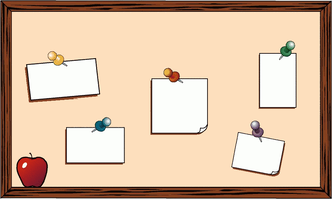 If the reader finds something they like the look of, they can click on the pin to find out more, but if they aren’t interested they can just go onto the next pin that takes their fancy. Unlike other social media sites, Pinterest actually encourages users to click on links, by including those links in prominent positions on the details page of the pin. And this is why it is a marketing tool for indie authors. Now, I’m not claiming that Pinterest is going to turn a book into a bestseller overnight. Nor would Melissa Bourbon make that claim. This is just one more string to the indie author’s marketing bow and should be viewed in the same light. But it’s probably a more powerful marketing tool than either Facebook or Twitter/X. We started using Pinterest back in November, when we were setting up our social media marketing for the Christmas season. It’s a big time for book sales and we wanted some of that action. The timing of our “discovery” of Pinterest couldn’t have been better. 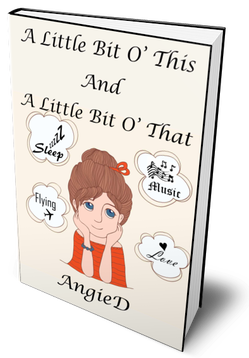 We have two books which we think are especially suitable for Christmas and we put up several pins relating to them. And we got sales. What is particularly significant is that for one of the books, sales had been pretty poor over the first 10 months of the year, but as soon as we put it on Pinterest, that changed. Coincidence? You know we don’t believe in those. Besides, Pinterest’s tracking data showed us how many views and clicks we got for the pins, so we can be pretty sure that the sales came via Pinterest and not just from random searches on Amazon. I’ll be frank, there is some work needed to get the best out of Pinterest, just as there is for any other marketing channel. Experts suggest you have to make around 10 pins a day. Well, we haven’t got time for that so we’re not going to make the same suggestion. But using it regularly is going to have better results than using it sporadically.  In one of the videos we link to later in the blog, the presenter suggests that you can get great returns not by pinning quantity, but by pinning quality. She claims that over 50% of the traffic that is driven to her website by Pinterest comes from just 3 pins, which she made a while ago. But they are “quality” in terms of what makes a good pin, which is why they keep on working for her in the long long term. We’re not going to take you line by line through how to set up a Pinterest pin or how to create a good quality pin. Instead, we went on YouTube and found a video that does that. We provide a link to it at the end of the blog. But we have learnt a few tricks, and we’d like to offer you a few tips. 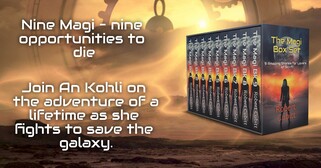 The first tip we have is to make sure your book’s cover is eye catching. Your cover image is going to appear as one of many, so it has to stand out. If it isn’t eye catching, put it onto a background that is eye catching. Graphics packages such as BookBrush and Canva have tools that allow you to do that. It does no harm to surround the cover image with short text phrases, to entice the reader in. We’ve put one of ours here to show what we mean. Pinterest also allows you to overlay text onto your images. Second tip: Make sure the filename for your cover image actually describes the image. Many graphics packages download images with filenames that are just bunches of numbers and letters and authors often don’t rename the files. But if you rename them so that it describes the image, the description acts as keywords, so they show up in search results. For example, we use the format “Author Name_Book Title_Genre_Book” Not only will those words be found by searches on Pinterest, but Google will find them too if someone does an image search using any of those terms. I always include the word “book” in all relevant file names, because that will show up in all searches where “book” is used as a search term, even if none of the other words are used.  Third tip: Use the right tags for your books. Pinterest doesn’t allow you to create your own tags for your books, but it has lists of tags that have been used in a lot of searches. If you start to type a word into the tags bar, you will get a box that contains all the tags related to that word. Scroll down and select the tag you want and click on it and it will be added to your pin. It guarantees that your pin will be found if that tag is used in a search. Use as many tags as you can – but make sure they are relevant. Your book showing up in a search related to pea soup is not going to win you any friends or sell you any books (unless you write recipe books, of course).  Fourth tip, post regularly and vary your post images and text. As we have said in previous blogs, it can take up to seven viewings of a product before some people will buy it, but at the same time Pinterest has rules about posting spam, so if the images and text are always the same you could get into trouble. This is where packages such as Canva and BookBrush come in handy because they have lots of templates you can use to create different images with different text, all of which will have your book cover at the forefront. Fifth Tip, make sure you are using the right keywords in your pins. Like any other search engine, Pinterest looks for pins that contain the words that users input into the search bar. So, you have to use the same keywords. You can also nudge the search in the right direction by including hastags in the pin’s description (but put them after the main text). Do your research by entering the keywords you think are right to see what sort of results you get. Refine them until you are getting results that display books just like yours. Those are then the keywords you need to use in your pins to get your books found.  Finally, don’t forget to make special pins for special events: Christmas, Valentines Day, Halloween, Black Friday, Cyber Monday etc. These are great times to boost your sales, especially of paperbacks, and special pins will attract people who are looking for anything related to those occasions. So, that is our quick whizz around Pinterest, and we hope you have the same success with it as we have. But remember, this is just one string for your marketing bow. A well rounded marketing strategy uses all available and relevant channels and also uses them in multiple different ways. If you want to give Pinterest a try, then beginners can watch this video Once you are happy with using the platform, you might want to take a look at this video, which is aimed at optimising pins for business use. If you have enjoyed this blog, or found it informative, then make sure you don’t miss future editions. Just click on the button below to sign up for our newsletter. We’ll even send you a free ebook for doing so. |
AuthorThis blog is compiled and curated by the Selfishgenie publishing team. Archives
March 2025
|

 RSS Feed
RSS Feed